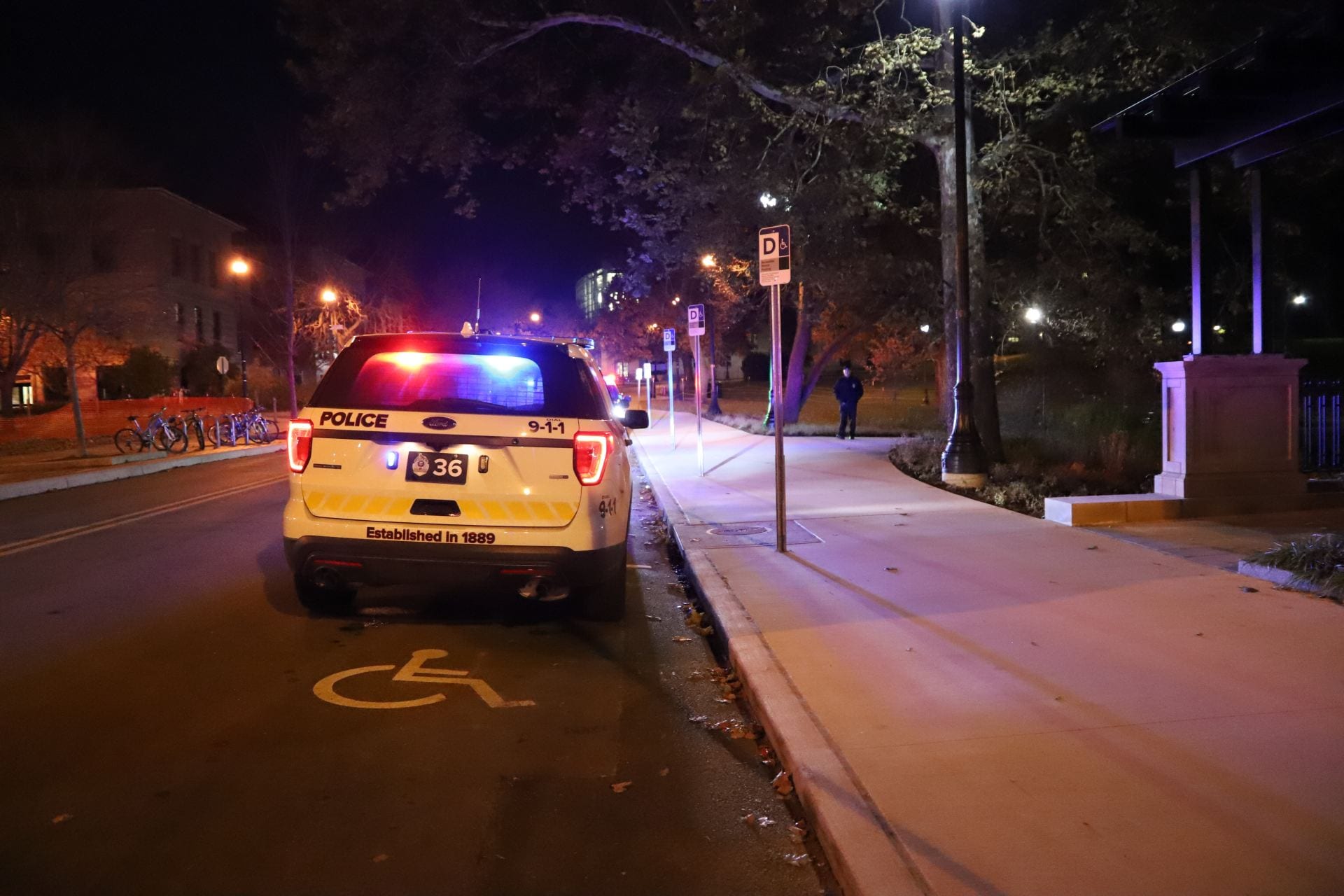
Spencer Conrad, a third-year in Logistics, and Lieutenant Andrew West of the OSU Police Department share a laugh at the Police Dialogue event in the Ohio Union on Mar. 28. Credit: Willow Mollenkopf | Lantern Photographer
OSU Sustained Dialogue hosted its fourth annual Police Dialogue event Thursday evening in the Ohio Union Performance Hall.
Members of the Ohio State and Columbus communities, as well as local law enforcement officials from agencies throughout central Ohio gathered for round-table discussion on topics such as race relations, community policing and other law enforcement topics.
Started in 2016, the Police Dialogue was implemented to build relationships across lines of difference among members of law enforcement and community members — who are generally isolated except in times of conflict — through shared experiences Phoebe Potiker, treasurer of Sustained Dialogue, said.
University Police Chief Kimberly Spears-McNatt said the event grants students, staff and faculty members the opportunity to interact with law enforcement in a “relaxed” environment.
“It allows for accountability, transparency and true dialogue,” Spears-McNatt said. “These lead to different views and concerns being heard, which create a clear understanding of everybody’s values and concerns.”
Sustained Dialogue opened the discussion with a set of guidelines for participants to follow called group norms, which aimed to help make the dialogue a more conducive space for everyone to have a comfortable and productive conversation, Charu Tiwari, a member of Sustained Dialogue and fourth-year in biology, said.
These group norms included the “oops and ouch rule.” If a person at the table said something that came out in a way that wasn’t intended, the person had to say “oops” to let the other person know that they did not intend to hurt their feelings. If a person felt offended by something another person said, they were to say “ouch,” indicating that their feelings had been hurt by what the other person said.
Each table was seated with students, faculty members, police officials and a moderator to engage in discussion.
With the rules in place, members of the community and police dove into the topics they were most concerned with.
Robert Sagle, acting commander of Columbus Police, said that he doesn’t get a lot of positive interaction during his night shift and often sees “the worst” sides of people, such as when they’re intoxicated or the victim of a serious crime.
“This is why events like this are so important,” Sagle said. “We can sit down and have a conversation, face to face, listen to each other and learn from each others’ experiences, rather than making assumptions from media-driven misinformation from all sides.”
Shaniqua Ingol, program coordinator of the Office of International Affairs, agreed that the media has often lead to a negative perception of the police in general, which can contribute to negative interaction between the community and the police.
“A lot of times with the media involved, we can get a very heightened or exaggerated view of the police and vice versa of the community,” Ingols said. “It doesn’t help actually solve the issues that we need to solve.”
A solution to increase positive interaction among the two groups is working to create relationships with police, before there’s a problem interaction, Natassja Boham, a fourth-year in animal sciences, said.
“By building those positive relationships, it helps mitigate any issues that rise later on when there is an altercation,” Boham said.
Police and members of the community share more in common than they think Malik Riley, deputy sheriff of Franklin County, said.
“I came from the community, growing up on the westside of Columbus, the community made me who I was,” Riley said. “We’re just as a part of them, as they are of us, which is why our main goal is to provide safety for them and their family and for me too.”
At the close of the event, members of Sustained Dialogue took to the stage to address ways to keep the discussion going after the event, including asking a police official to go grab a coffee sometime or participate in a ride along with an officer, to further promote positive interaction among members of the community and law enforcement.
“We’re not against the communities we serve, we’re on the same team,” Sagle said. “We work so much better together to make the community safer.”


